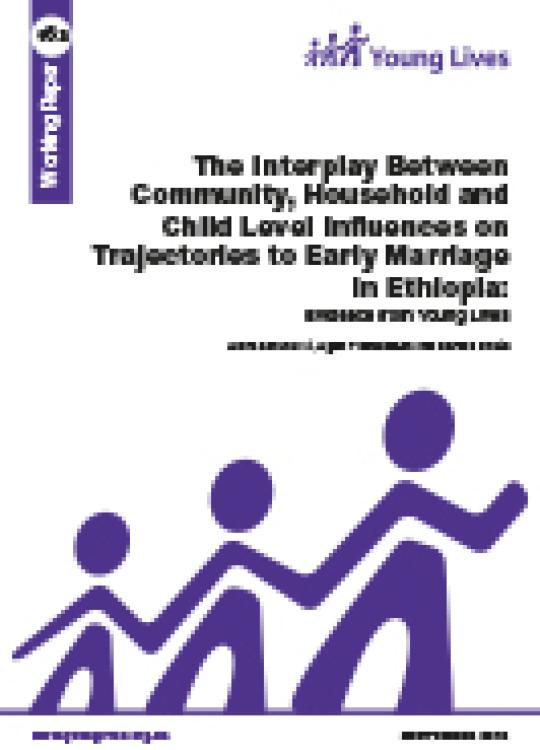
Breadcrumb
The Interplay Between Community, Household and Child Level Influences on Trajectories to Early Marriage in Ethiopia
Child marriage is a global concern and a priority issue for the African Union; the Ethiopian government has devised a strategy to eliminate the practice by 2025. In this paper we analyse Young Lives survey and qualitative data from girls aged 19 to understand pathways to early marriage, which we argue can best be explained by a combination of interacting factors at community, household and individual levels.
Our findings confirm that child marriage is primarily a female, rural phenomenon, with regional and local differences related to cultural norms. Early teen marriage is more common in regions in the north and is often related to family poverty. Customs of dowry in the north and bridewealth in the south present constraints, especially for teenagers from poorer families.
Household characteristics are also important; parental education, especially that of the father, reduces the likelihood of child marriage. Parental death and absence was highlighted in the qualitative case material. Household wealth was particularly significant, with less than 10 per cent of early marriages among the top tercile, and family circumstances such as ill-health and drought were compounding factors. Parental imposition of marriage was stronger and girls’ agency more limited among the younger teenage girls, whereas older teenagers were more likely to make their own marital choices.
The gender imbalance is stark, with 13 per cent of teenage girls married compared to less than 1 per cent of boys. Girls continuing with schooling were less likely to get married, but most left school first due to family poverty and problems. Paid work at 15 was found to be statistically significant as a predictor of early marriage, while case material suggests that some girls chose marriage over jobs involving hard labour. Once married, return to schooling was constrained by social norms and childcare.
The findings suggest a need to recognise that there are early marriage ‘hotspots’, and conversely areas where the practice is declining faster which can provide important lessons for interventions. Policies should further promote girls’ education, including for already married girls, and focus more on protection for younger teenager girls who are at more risk from imposed marriages.

